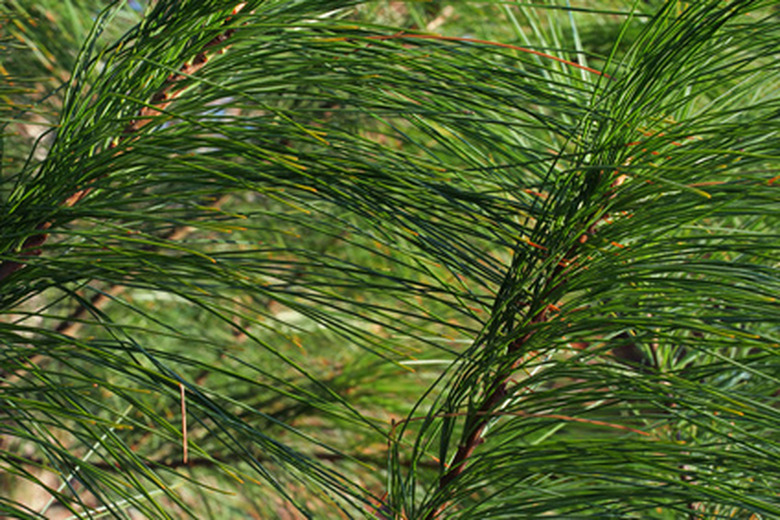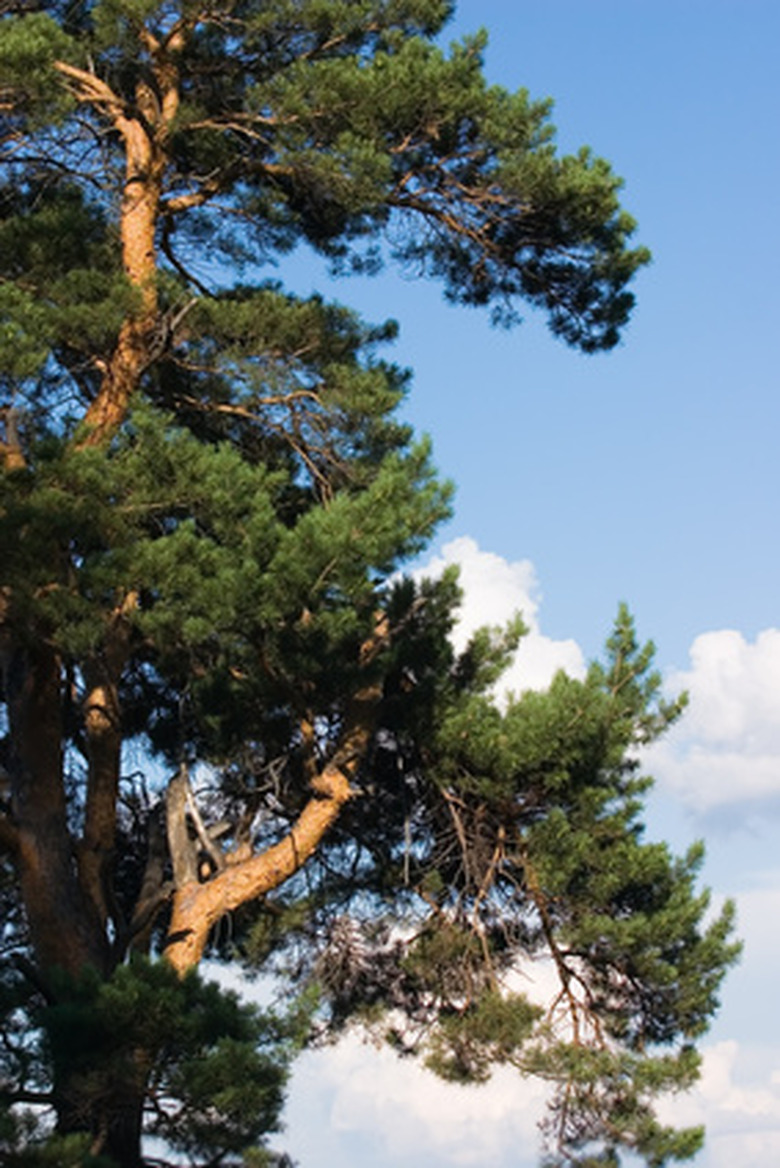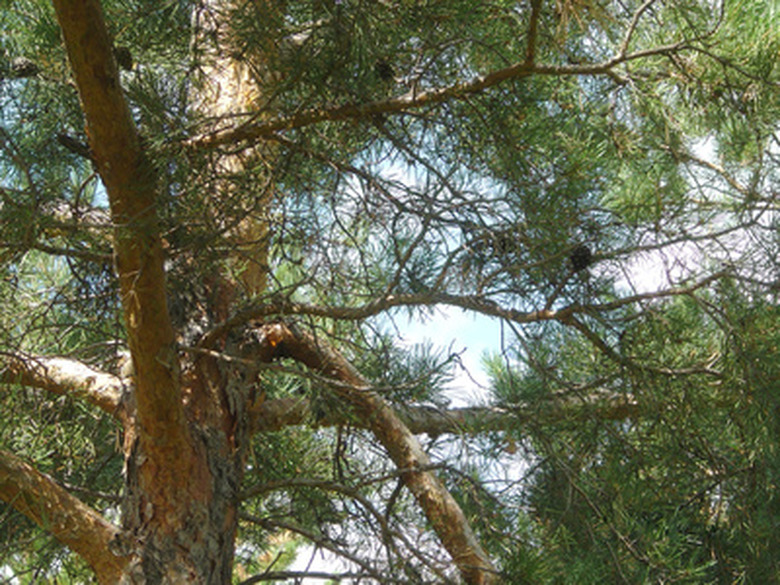Pine Trees In Ohio
Trees provide us with shade and beauty. There are 14 tree species within the pine family that grow in abundance in the state of Ohio, according to the Ohio Department of Natural Resources. These trees can be found growing at high elevations on ridge tops or along the flood plains close to rivers and streams. Regardless of their preferred habitat, all Ohio pines are resilient and hardy. They survive well in the erratic weather and occasionally harsh conditions that characterize the state.
White Pine
White pine (Pinus strobus) is prolific throughout Ohio. Native to the Appalachian region, white pine is characterized by a rigid, straight trunk with branches arranged one to two feet around the trunk in a whorl pattern. White pine grows best in rich, well-drained soil of acidic nature. They prefer full sun and can be found growing naturally on ridge tops throughout Ohio. White pine trees are distinguishable from other Ohio pines by the number of needles on their branches. Needles occur in bundles of five, with a small sheath holding them in place. Needles are soft and blue-green. The bark is gray-brown. As the trees mature, the bark furrows characterized by deep ridges. White pine leaks sap on occasion. When exposed to the air, the sap turns white and solidifies on the trunk.
- Trees provide us with shade and beauty.
- Native to the Appalachian region, white pine is characterized by a rigid, straight trunk with branches arranged one to two feet around the trunk in a whorl pattern.
Virginia Pine
Pinus virginiana is known by the common names Virginia pine or scrub pine. The Virginia pine is yet another evergreen tree native to Appalachia. Scrub pines are more common throughout unglaciated parts of Southern Ohio but can be found throughout the state. Scrub pine is so named because of its scraggly, bush-like growth; it grows where few other plants will. They can be found on rocky outcroppings, in clay-filled soils and in areas where full sun is common. They thrive on drought and neglect, preferring acidic soils. The needles occur in bundles of two or three and are twisted in shape. The bark is scaly and reddish brown.
- Pinus virginiana is known by the common names Virginia pine or scrub pine.
- Scrub pines are more common throughout unglaciated parts of Southern Ohio but can be found throughout the state.
Scotch Pine
Like most other pines found in Ohio, the Scotch pine is a resilient plant known by the scientific name Pinus sylvestris and native to Europe and Asia. Used as erosion control and to establish regrowth after deforestation, Scotch pines survive in a multitude of conditions. While these trees prefer well-drained, acidic soils, they thrive in any condition. Sandy, rocky or clay soils do not hinder the growth of Scotch pines. Acidic, neutral or alkaline soils provide a fine habitat for these trees. They grow throughout Ohio, even in urban areas where they are used as ornamental features. Scotch pine needles are short and twisted in appearance. They feature a blue-green or yellow-green color. The lower trunk of the tree features a furrowed gray-brown bark. The upper portion of a Scotch pine trunk is bright orange and flaky.
- Like most other pines found in Ohio, the Scotch pine is a resilient plant known by the scientific name Pinus sylvestris and native to Europe and Asia.
References
- "Trees, Shrubs, and Vines of Southeastern Ohio"; William Perine, Dennis Profant; 1993
- Ohio Department of Natural Resources: Ohio Trees Index
- "Trees of North America: A Guide to Field Identification, Revised and Updated"; C. Frank Brockman, Rebecca Marrilees; 2001



